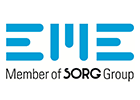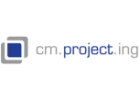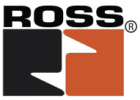As a pioneer in climate-friendly glass production using hydrogen as an energy source, the SCHOTT technology Group has achieved another important success: The company has succeeded in producing a test melt with 100 percent hydrogen in the laboratory and thus completely without using natural gas. The specialty glass experts from Mainz had already started the first industrial-scale tests with the participation of local partners late in 2022. In these tests, 35 percent hydrogen was added to a melting tank that had previously been operated exclusively with natural gas. The results showed that a change in melting technology away from using fossil fuels is indeed possible. This was confirmed with the new 100 percent hydrogen trial.
“The current laboratory tests were conducted under conditions that were much closer to production than in 2020 when we conducted preliminary tests in a research project. Thanks to the expanded hydrogen supply at the plant in Mainz in the meantime, we were now able to melt and test for a significantly longer period of time,” explained Dr. Matthias Kaffenberger, Melting Technology Manager at SCHOTT, in describing the most recent progress. “For the first time, we succeeded in completely using hydrogen for a holding time of 10 days on a laboratory scale. This success represents an important milestone for the technology Group to be able to perform corresponding tests in production reality and the results in large-scale technology in the future.”
Ambitious goal: climate-neutral glass production using green hydrogen.
Heating glass melting tanks with hydrogen is not a trivial task. Temperatures of up to 1,700 degrees Celsius must be maintained permanently during the melting process. Research into whether hydrogen can do this constantly and how its use affects the quality of the glass products is real pioneering work. The rewards of climate-neutral glass production would be great: Glass is widely used as a technical material – in household appliances, consumer electronics, semiconductors, and vehicles, as well as astronomy, aerospace, and aviation, for example. The CO2 emissions that are generated during energy-intensive glass manufacturing with natural gas and that could be avoided are high. SCHOTT is therefore aiming to become climate neutral in its production by 2030 (Scope 1&2 Greenhouse Gas Protocol).
To achieve this goal, the Group acts according to the principle “Avoid – Reduce – Compensate.” The action plan comprises four areas of action: Technological change, expansion of energy efficiency, conversion to 100% green electricity and, as a final step, compensating any remaining emissions by engaging in high-quality climate protection projects. Against the backdrop of technological change, the company is focusing above all on the energy-intensive process of glass melting. Here, two paths are being pursued: the electrification of the melting tanks with green electricity and the use of green hydrogen instead of natural gas.
Challenges: the hydrogen infrastructure and green energy sources
Until now, SCHOTT has had to conduct its tests using gray hydrogen. Green hydrogen, produced from renewable energies, is not yet available in sufficient quantities. Two key factors are missing for this: an extensive infrastructure for (industrial) hydrogen supply and the expansion of renewable energies for the production of green electricity.
“As a pioneer on using hydrogen in an energy-intensive industry, we urgently need to take further steps and come up with timely solutions for a functioning infrastructure,” said Dr. Jens Schulte, member of the SCHOTT Board of Management, in an appeal to the decision makers in the German government and German parliament. “The climate protection contracts planned by the German Federal Ministry of Economics and Climate Protection to promote climate-friendly production represent an important vehicle for keeping the participating industries competitive and enabling rapid implementation. We rely on the innovative strength and close cooperation with our partners as well as the federal states.”
Research funding projects: SCHOTT has been investigating possible hydrogen solutions since 2018.
The “H2 Industry – the Use of Hydrogen in Industrial Combustion Processes” project, in which SCHOTT tested the admixture of hydrogen in production at the site in Mainz in late 2022, is being funded by the European Regional Development Fund and the Rhineland-Palatinate Ministry for Climate Protection, Environment, Energy and Mobility. SCHOTT has also been active in other research funding projects for quite some time: The MiGWa project (Microwave Glass Hydrogen) runs from the beginning of 2021 until the end of 2023. It is funded by the German Federal Ministry of Education and Research and the European Union and is aimed at reducing fuel gas in the glass manufacturing process by using hydrogen or microwaves. And in the Copernicus P2X projects, SCHOTT tested the use of 100 percent hydrogen in the glass melt for the first time as early as 2020.



























